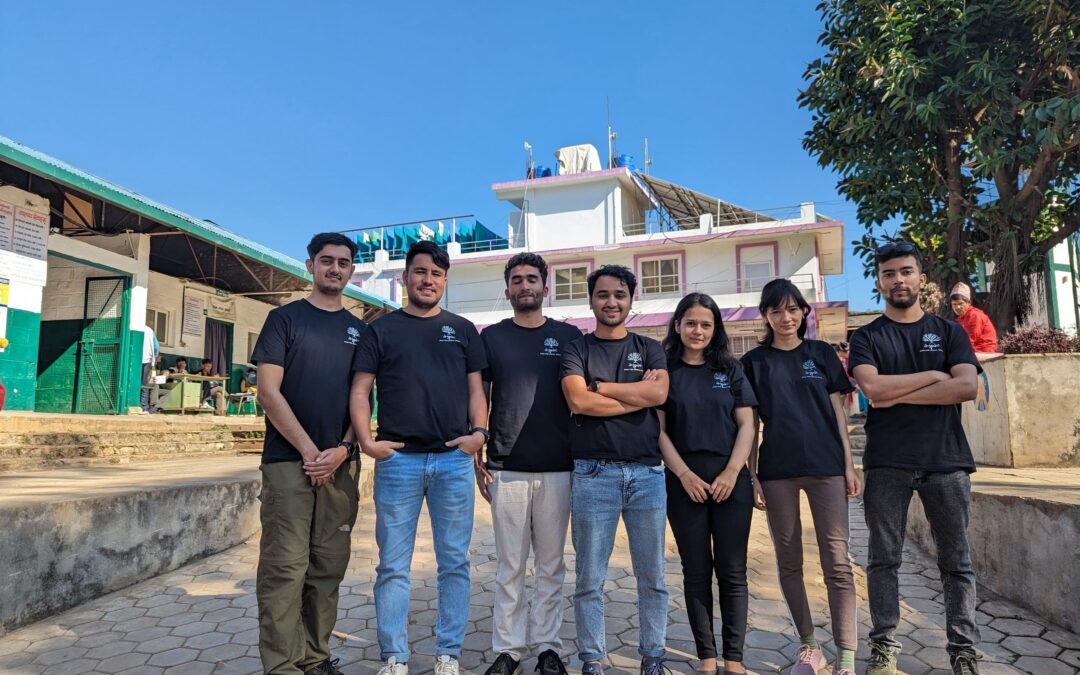Right after the festival holiday, our team was geared up to explore the western part of Nepal. None of us had visited Rukum before, so everyone was thrilled to explore the Rukum community. Another thrilling part for us was that this was our first work trip, so this added nervousness to our excitement to travel. Around 5:00 AM in the morning, we headed out from home. It took us two days to reach Rukum. Rukum is around 600KM away from the Kathmandu Valley, and the roads are in bad condition, so it took almost 20 hours for us to reach Rukum Community.
Just a few days before, Rukum was hit by an earthquake, and even while traveling, we were hit by an aftershock. The earthquake had made road conditions even worse, causing landslides, but the beauty of western Nepal was worth the trouble. We were amazed by the beauty and simplicity of nature.
As soon as we reached Rukum Chaurjhari Hospital, we were warmly welcomed by hospital admin Kripesh Pantha Dai. Unfortunately, on the day we reached the CHR hospital, a local bus had fallen into the river, and the hospital was very packed with accident and earthquake victims. All of us felt really bad for the situation, but at the same time, seeing the CHR hospital serve so generously to people, our motivation to help CHR hospital with blood-related issues got amplified. Not just building the system, but we even stepped up and did a blood donation for the hospital so that they could use fresh blood to immediately treat patients.
We had our first meeting with hospital admin Kripesh and vice-director Dil Sir. They had spent more than a decade working in rural Rukum, serving people with better health facilities. It was really humbling to hear their story of how they made a significant impact on the healthcare scenario of the community. They were really happy to see young people like us passionate about serving the backward community using our skills.
The prime agenda for the meeting was to do social, economical, and technical feasibility. Since we didn’t had plenty of opportunities to interact with our community partner previously, we had integrated features based on our assumptions. The meeting with the community partners helped us come up with feasible features that would suit the community. Previously, we had assumed that the system would send SMS alerts to nearby people. However, we came to know that this feature isn’t economically and technically viable for that community. Instead, we opted for building an app.
Instead of directly reaching out to potential donors, the hospital would communicate with the local representatives, and the local representative would make a request to donors for blood donation. It might look like involving local representatives would make the process of finding blood lengthy, but that’s the most efficient way to achieve our project goal because local representatives have great influence in the community, and people are likely to be convinced to donate blood in times of need if requested by a local representative.
Now that we had local representatives/government as another important stakeholder in our project, we scheduled a meeting with them the same day. Representatives from Recross, hospital, government officers were also invited to the combined meeting. Blood-related issues were one of the major challenges faced by Rukum, so they really appreciated our project concept. They were enthusiastic to help us in every way possible.
Now that we had studied the technical, social, and economical feasibility of the project, we were relieved. The next day we scheduled our meeting with the hospital’s medical director. Since the hospital was operating with a small team, upon our meeting, we came to realize that some of our features were unnecessary, so we decided to restructure some of our features. We also did a walkthrough of the hospital’s existing system. We noticed some bugs in the existing system, so now we are extra cautious not to let those types of bugs repeat in our system. After three meetings and some sightseeing, we headed back to Kathmandu.
In summary, our expedition to Rukum was a transformative experience, highlighting the resilience of a community facing healthcare challenges. Collaborating with local stakeholders, we refined our project to align with the community’s unique needs. The trip reinforced our commitment to using technology for social impact and emphasized the importance of empathy and adaptability in addressing real-world challenges. As we returned to Kathmandu, our resolve to contribute to healthcare accessibility in underserved regions was stronger than ever.

